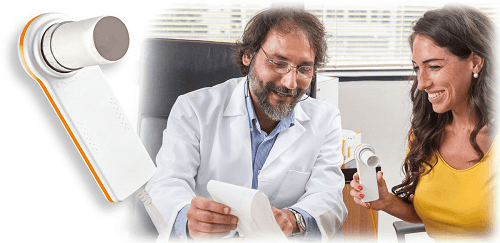
Your Safety Department LLC
Floresville, TX 78114
Spirometry Testing for Work with Silica
Spirometry, the most common type of pulmonary function test (PFT), is used to evaluate worker respiratory health in medical surveillance programs and to screen workers for their ability to perform certain tasks. Spirometry results can play a central role in decisions about worker job assignments and personal protective equipment, and in the assessment of exposure-related health effects. OSHA standards for asbestos, cadmium, coke oven emissions, and cotton dust require spirometry testing as part of medical surveillance (see 29 CFR 1910.1001, 1910.1027, 1910.1029, and 1910.1043). OSHA standards for formaldehyde and benzene require pulmonary function testing when respiratory protection is used at work (see 29 CFR 1910.1048 and 1910.1028).

Whether spirometry is conducted to comply with an OSHA regulation or as part of another workplace-mandated program, its value is compromised when testing is conducted incorrectly, equipment is inaccurate, or results are misinterpreted. Technically flawed tests too often lead to inaccurate interpretations of worker respiratory health, falsely labeling normal subjects as “impaired” or impaired subjects as “normal.” Such flawed test results are not only useless but also convey false information which could be harmful to workers (1). Too often, those who conduct the tests or interpret the results are unaware of the impact of technical pitfalls and of current spirometry testing recommendations.
Because spirometry has become so important in occupational health practice, it is essential for companies to consider the required components for valid tests and strategies for interpreting results, so that occupational spirometry tests are useable and of high technical quality. A strategy for addressing a highly technical program will include:
(1) accurate measurement of worker lung function (training of personnel, equipment considerations, and spirometry test procedures);
(2) appropriate interpretation of valid tests (comparing worker results with normal reference values and evaluating worker results over time);
(3) Quality Assurance (QA) reviews; and
(4) recordkeeping.
Contact Your Safety Department, LLC at 888-859-5653 to learn how we can help you achieve accurate spirometry measurements for your workers and to develop a highly rated technical approach to your spirometry testing requirements.
Chris Thuneman is an accomplished Board Certified Safety Professional who shares lessons learned over a 30 year career to help others achieve a higher level of safety awareness in some of the most hazardous working environments. Please feel free to connect with him at:
chris.thuneman@yoursafetydept.com or at 888-859-5653